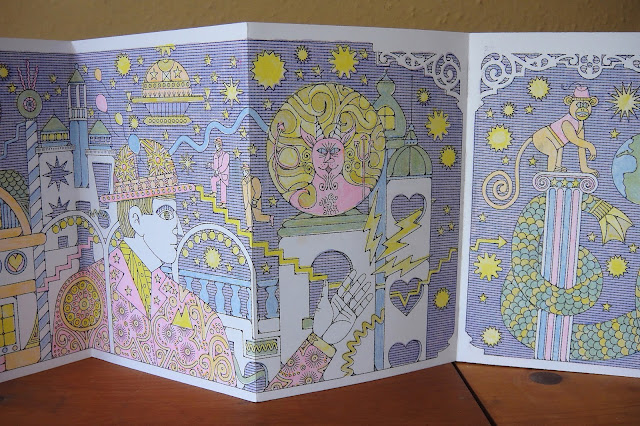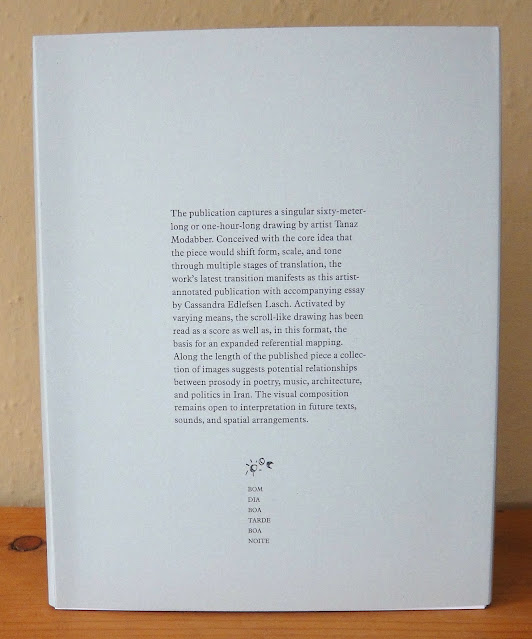This Toronto based illustrator says of Mirror World that "It's fun being able to curate a tiny world and populate it with things you love...that was the main impetus behind Mirror World, putting a bunch of the carnival and dream imagery that was rattling around in my head to paper. I like that with art you can collect the old things you love, while simultaneously creating something new. It's therapeutic." Inspired by the architecture of Coney Island and carnival signage he states "I love how overwhelming, colourful and electric carnivals are and wanted to capture a bit of that energy. Even though they're still images, I want all the art I do to vibrate with movement and pattern."
Further in his interview with Lucy Bourton (Itsnicethat.com, March, 12, 2018) he notes that "The front side of Mirror World features a crowd of identical men wearing pink and yellow suits and bowler hats. Something about the repetition of the bowler men was mesmerizing to me, and so I just kept repeating them...the back side is a distorted vision of the same scene where everything is reversed—day is night, the scale has changed and buildings are merging etc... As it progresses from left to right, the scene gets more and more surreal until in the final panel it breaks down completely."
6 double-sided pages, individual page 8" x 5.5", and when opened 2' 9".
reverse side





























